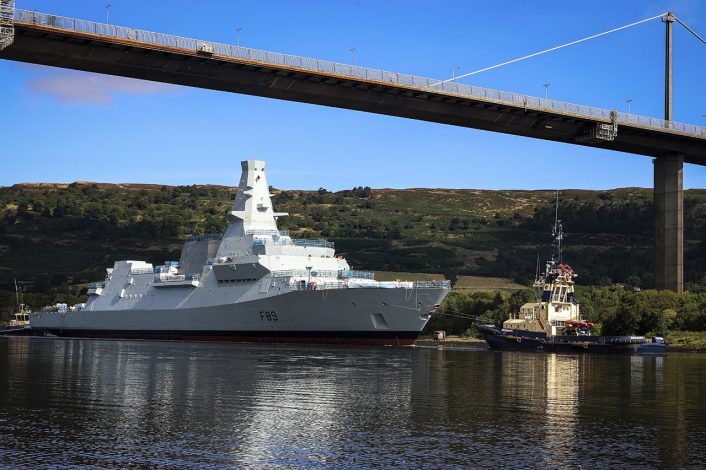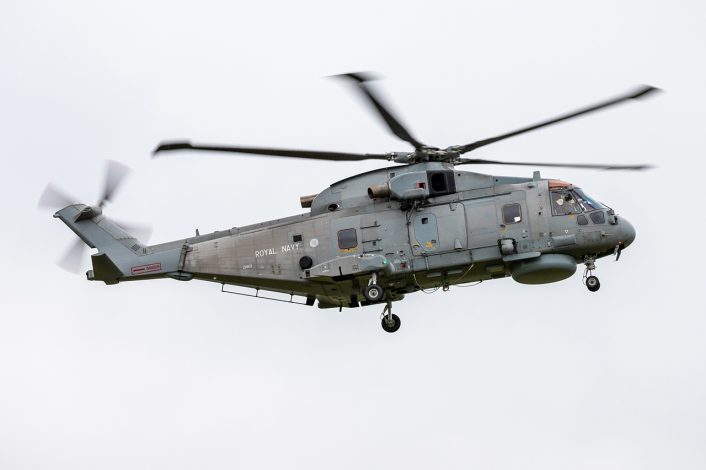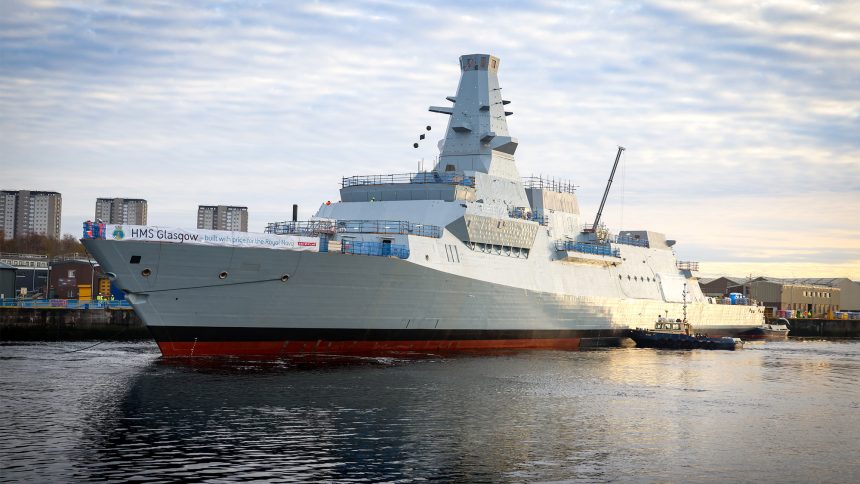A long awaited decision on the Royal Norwegian Navy’s next generation warships was announced on Aug. 31, with Norwegian PM Jonas Støre confirming the procurement of UK-designed Type 26 frigates in a deal worth £10 billion.
At least five Type 26 frigates will be purchased to replace four Fridtjof Nansen class frigates built in the 2000s. While the Fridtjof Nansen class is relatively modern compared to other frigates being replaced by the Type 26 worldwide, the loss of HNoMS Helge Ingstad in a 2018 collision has left the fleet permanently below strength.
Securing wires were unable to prevent #HelgeIngstad sliding into deeper water. Last night she sank further and is now almost entirely submerged. pic.twitter.com/bx4uLvgEUV
— Navy Lookout (@NavyLookout) November 13, 2018
A significant factor in the decision was commonality and interoperability with the Royal Navy, as well as the Type 26’s strong focus on anti-submarine warfare. A combined fleet of at least 13 Type 26s will patrol the waters of Northern Europe, where Norway and the UK are already close partners.
The Norwegian government has selected The United Kingdom as a strategic partner, and will procure British frigates for the Royal Norwegian Navy, said PM @jonasgahrstore during Sunday’s press conference 🇳🇴🇬🇧 https://t.co/IDrE6uo6yx pic.twitter.com/YPa04Cftof
— SMK (@Statsmin_kontor) August 31, 2025
Norway is the third overseas nation to select the British frigate, following Australia and Canada. While the exact configuration of Norway’s Type 26s remains to be confirmed, the specific mention of interoperability between “identical” frigates likely indicates that they will be much more similar in specification to the Royal Navy’s own ships compared to the adapted variants in the works for elsewhere. In Australia, known as the Hunter class, the ships are expected to carry the CEAFAR2 radar system in place of the Royal Navy specification Type 997 Artisan, while the Canadian ships, known as River class, will be designated as destroyers and carry the AN/SPY-7, Aegis Combat System, and American-designed missiles.
The UK’s Type 26s, known as City class, are specialised anti-submarine warfare ships designed to replace the well regarded but long in the tooth Type 23. Only 8 Type 26s are currently planned for the Royal Navy, with the remaining frigate requirement being covered by the general purpose Type 31 Inspiration class. Examples of both frigates are in the late stages of production, with Type 26s HMS Glasgow and HMS Cardiff expected to be commissioned in 2028 and the Type 31 HMS Venturer by 2027. They will carry the battle-tested Sea Ceptor air defence missile system alongside strike-length Mark 41 vertical launch system cells for land attack and anti-ship missiles – a first for the Royal Navy.

According to the UK Government, the £10 billion is, by value, the biggest warship export ever conducted by Britain, and the largest defence procurement ever for Norway. 4,000 jobs will be supported by the deal in the UK through the 2030s, while industrial participation by Norway is widely expected to also be included.
Norwegian Prime Minister Jonas Støre said: “Norway and the United Kingdom are close allies, with common interests and strong bilateral ties. I am confident that the strategic partnership with the UK for purchasing, developing and operating frigates is the right decision.”
His British counterpart, Keir Starmer, added: “This Government has forged new partnerships across the world to deliver for people at home and the export of our world leading Type 26 frigates to Norway will do exactly that, supporting well-paid jobs up and down the United Kingdom, from apprentices to engineers,”
“This success is testament to the thousands of people across the country who are not just delivering this next generation capabilities for our Armed Forces but also national security for the UK, our Norwegian partners and NATO for years to come.”
Merlin Order?
The ever increasing likelihood of Norway selecting the Type 26 in recent months has encouraged the prospect of a related order for AW101 Merlin maritime helicopters, which are used by the Royal Navy as their premier rotary wing ASW platform. Several models of the Type 26 used to illustrate a Norwegian operated variant of the ship have depicted a Merlin on the helicopter deck. Mutual use of the Merlin airframe would also align with the goals of operating identical frigates with matching capabilities.

Norway already operates the utility variant of the AW101 for search and rescue, though in 2023 ordered the MH-60R Seahawk as a maritime helicopter to replace NH90s. However, while the MH-60R is a highly capable helicopter, there is still possible room for an ASW focused helicopter. Unlike the Seahawk, the Merlin is an independent ASW platform, able to conduct the full mission set onboard including all processing. MH-60R, meanwhile, is designed primarily to work in tandem with a ship, with more limited onboard capabilities owing to its smaller size. Merlin is still, of course, capable of interfacing with surface vessels to improve its ASW capability – and the Type 26 is specifically designed to work with the Merlin’s equipment.









